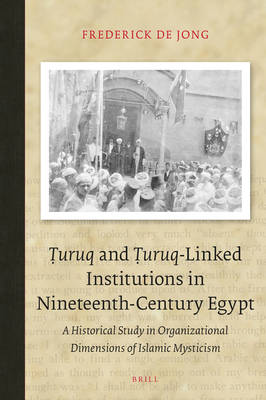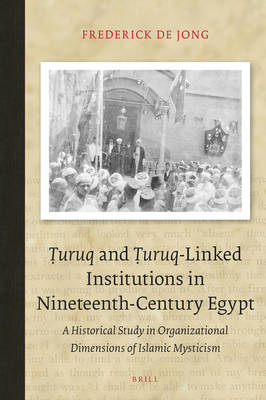
- Afhalen na 1 uur in een winkel met voorraad
- Gratis thuislevering in België vanaf € 30
- Ruim aanbod met 7 miljoen producten
- Afhalen na 1 uur in een winkel met voorraad
- Gratis thuislevering in België vanaf € 30
- Ruim aanbod met 7 miljoen producten
Zoeken
Ṭuruq and Ṭuruq-Linked Institutions in Nineteenth-Century Egypt
A Historical Study in Organizational Dimensions of Islamic Mysticism
Frederick de Jong
€ 192,45
+ 384 punten
Omschrijving
Ṭuruq and ṭuruq-linked institutions by Frederick De Jong was first published in 1978. It is largely based on research in public and private archives in Cairo, and on published materials in limited circulation. This study became highly influential in its field. De Jong describes the development of the administration and organization of the ṭuruq and ṭuruq-linked institutions (takāyā, zawāyā, and shrines) under the shaykhs of the Bakrī family in nineteenth- and early twentieth-century Egypt. Central to this administration is the principle of right of qadam, meaning the exclusive right of a ṭarīqa to proselytize and to appear in public in a particular area, if it could be proved that it had been the first to do so.
Specificaties
Betrokkenen
- Auteur(s):
- Uitgeverij:
Inhoud
- Aantal bladzijden:
- 286
- Taal:
- Engels
- Reeks:
- Reeksnummer:
- nr. 9
Eigenschappen
- Productcode (EAN):
- 9789004449091
- Verschijningsdatum:
- 16/07/2021
- Uitvoering:
- Hardcover
- Formaat:
- Genaaid
- Afmetingen:
- 155 mm x 235 mm
- Gewicht:
- 603 g

Alleen bij Standaard Boekhandel
+ 384 punten op je klantenkaart van Standaard Boekhandel
Beoordelingen
We publiceren alleen reviews die voldoen aan de voorwaarden voor reviews. Bekijk onze voorwaarden voor reviews.











